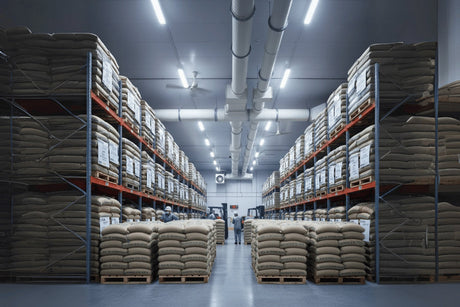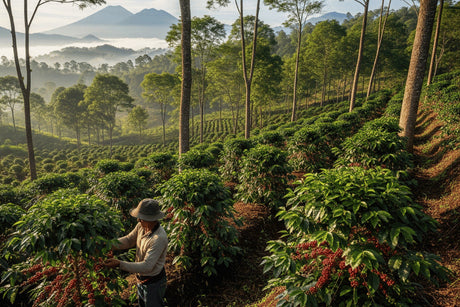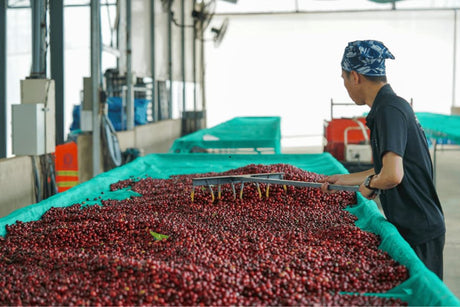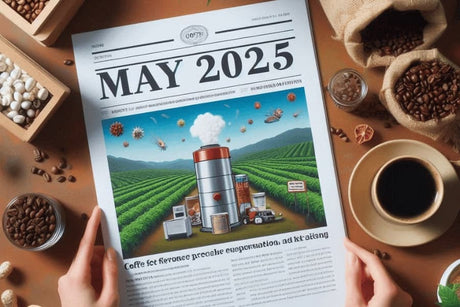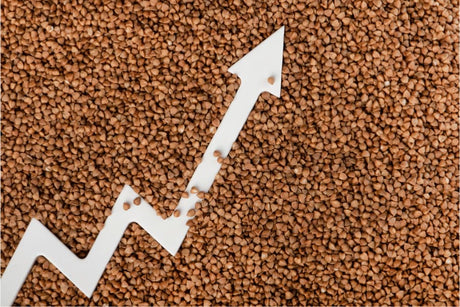mycuppa July 2013 Newsletter
This month, we discuss the influencing role acid plays in roasting and extracting (brewing) coffee.
Roasted coffee has natural acids present, and the levels are determined by the bean type (varietal), farming environmental conditions such as soil, the processing method (washed, sundried or naturally pulped) and the roasting profile (depth) applied to the raw beans.
Generally speaking, darker roasts remove more acids from the coffee beans.
Certain origins, such as Central American growing regions like Guatemala, Costa Rica, Honduras, Nicaragua, El Salvador, Panama, etc., produce coffee beans with higher acidity levels - ideal for matching milk-based espresso brews.
Countries like Sumatra (Indonesia) can have low-acid coffees, while some South American origins, like Brazil, can produce coffees with neutral acidity.
Typically, the roaster has the primary control over acid - deciding how to showcase best the particular bean (or beans in the case of blends).
Experienced coffee roasters look closely at acid - it becomes a core part of their analysis for reviewing or assessing new beans or inspecting the quality of recently roasted batches.
The most skillful coffee roasters know how to harness the acid in a bean - or tame it.
Acid can be a desirable attribute in a coffee - when extracted (or brewed) correctly, acid can provide a clean, sweet and uplifting finish to a coffee, especially when milk is added to a beverage like espresso - the acid in the extracted coffee blends or fuses with the alkaline in the milk.
Controlling acid in a bean (or blend) can be challenging for a coffee roaster as the acid levels can change as the coffee beans age.
Excessive acid in coffee beans can be mistaken as bitterness or, in some cases, sourness.
This can be even more detectable if the extraction is not ideal, where acids and bitter taints affect the overall cup quality.
In Australia, there is an overwhelming trend to roast with positive acid levels due to the 95% (roughly) ratio of milk-based coffees compared to black-only coffees.
In other countries like Europe and the US, the ratio of milk-versus-black is different and thus, coffee bean roasters will generally roast darker to remove acids from the coffee beans (or blends).
Sometimes, the darker roasting levels are not necessarily because of acids but due to those coffee bean roasters employing lower-grade raw coffee beans and thus roasting out some of those defects.
Each person has different sensitivities to what is the "best" acid balance - it's an individual thing.
For those coffee drinkers who enjoy much milk with their espresso beverage, e.g. big mugs of flat white, latte, cappuccino, etc., they are probably best to seek coffees from Central America with sparkling (or sharp) acidity to cut through milk.
Coffee drinkers who prefer black should seek out Brazil, Sumatra, Colombia, Papua New Guinea, and certain Ethiopian beans as they have a more balanced acidity.
Lighter roasts tend to retain higher levels of acids within the coffee bean.
The acids can be masked as "fruit", and for certain types of brewing methods such as Filter, Syphon, or press, these lighter roasts and fruity acids provide a wonderful extraction when prepared black, resulting in sweet and liquor-like flavours.
Lighter roasts can also suit ristretto-style espresso extraction.
A common trend over the last few years in high-end cafes is to deploy light roasts with double-ristretto (or double-frizzy) shots on the espresso machine - producing short, intense, fruity extractions.
These types of extraction may, at times, not work with milk, and in the more extreme cases, you can see the higher acids react with soy milk.
A light-roasted coffee bean with much milk may need more chocolate, caramel and flavour many coffee drinker's desire.
Dark roasted coffee beans can taste charry-ashy when extracted using the hipster double-ristretto style.
This may suit milk drinkers as the sweetness of the milk may balance the sourness or sharpness of the espresso shot.
Medium-roasted coffee beans are difficult - it's a double-edged sword.
Trying to roast all types of coffees in a medium style can result in some very weird acid balances - only some things will work, or it may not suit everyone's taste.
There is a theory that coffee beans should be roasted to suit the precise nature or character of that bean.
This sounds ideal; however, in practice, we have found that coffee needs to be roasted to suit the direct of the market, e.g. roasting coffee beans to fit or match what customers are demanding - this is a challenging feat.
We recognize that the majority of our customer base has access to some espresso extraction method - whether this is a machine (domestic or commercial) or stovetop/moka pot.
We also acknowledge that around 95% of coffee drinkers put milk in their brew.
If you need clarification or clarification about what coffee to select - please either contact us via our webpage, call us, or purchase the Roaster's Choice product and provide a description of what you need. We will do our best to match it for you.
Finally, we would like to thank all our wonderful customers for their tremendous support and loyalty over the last 12 months, and we wish you many memorable brews in FY14.


